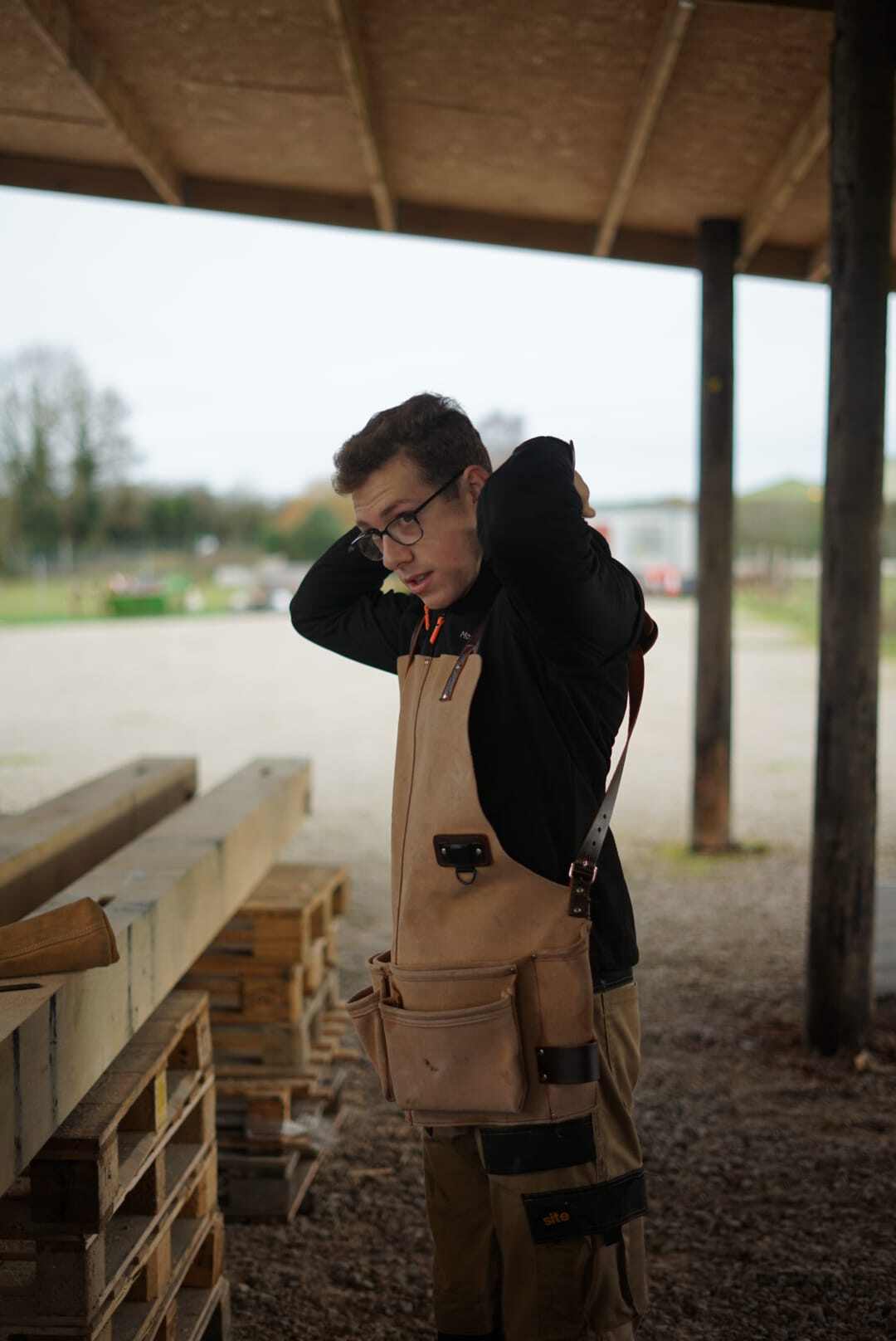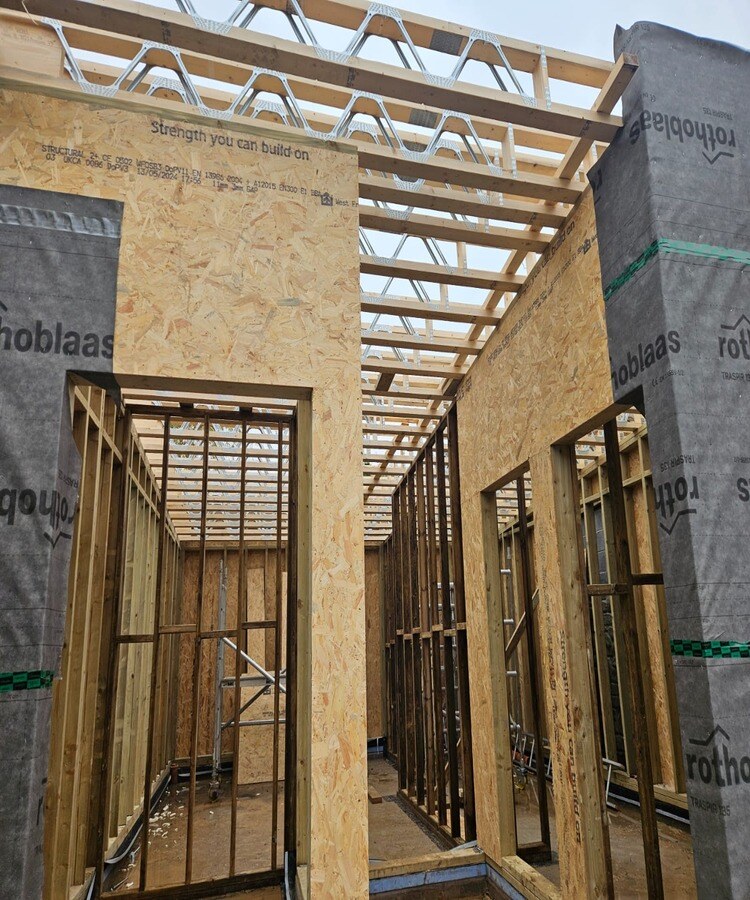In-Situ Timber Stick Frame Construction
In-situ timber stick framing involves constructing the timber structure assembly on-site using individual timber studs, plates, and rafters. The structure is built piece by piece, offering flexibility and adaptability to various design requirements.
Pros of Stick Framing:
-
Flexibility in Design – Stick framing allows for a high level of customization. The layout can be easily adjusted, making it ideal for complex designs and custom-built homes. Additionally, it accommodates foundations that may not be within the strict tolerances required for prefabricated timber frames.
-
Established Construction Method – With a long-standing history in timber frame construction, stick framing is a proven technique supported by extensive knowledge and experience.
-
Material Availability – Timber and other materials used for stick framing are readily available and often more cost-effective than SIPS panels, especially when working with a labour-only contract.
-
Ease of Repairs and Modifications – If any part of the frame is damaged, repairs are straightforward, as individual components can be replaced without affecting the entire structure. Similarly, design changes after construction are easier to implement.
-
Familiarity Among Contractors – Most timber frame contractors and builders are well-versed in stick framing, making it a comfortable and widely accepted construction choice.
-
Reduced Equipment Costs – Since individual timber sections are small and manually manageable, there is minimal reliance on cranes or heavy lifting equipment, reducing overall project costs.
-
Simplified Services Routing – Stick framing allows for easier routing of electrical and plumbing services, particularly when final service layouts are yet to be determined.
Cons of Stick Framing:
-
Energy Efficiency Challenges – Stick frames typically contain gaps and voids that can lead to heat loss and lower insulation performance unless additional insulation is applied.
-
Longer Construction Time – On-site timber frame erection and assembly of individual components extend construction time and increase labour costs.
-
Labour-Intensive Process – Skilled first fix carpenters are required to manually assemble the frame, making it more time-consuming than prefabricated timber frames.
-
Insulation Gaps – Traditional stick framing often necessitates additional insulation measures, such as spray foam or batt insulation, to meet modern energy efficiency standards, which can increase overall costs.
Both in-situ timber stick framing and SIPS offer unique advantages and drawbacks. Stick framing provides flexibility, cost-effectiveness, and easier modifications, making it a preferred choice for custom homes and projects requiring on-site adaptability. However, it may lag behind in energy efficiency and construction speed when compared to structural timber solutions like SIPS.
Choosing between these methods depends on the specific needs of your project, budget, and long-term goals. If flexibility and familiarity are priorities, stick framing is an excellent option. However, if sustainability and eco-friendly timber structures, energy efficiency, and rapid construction are more important, SIPS might be the better choice.
Stay tuned for a follow-up post where we explore the benefits and considerations of SIPS timber frame installation, off-site timber manufacturing, and how timber frame specialists can help deliver precision timber framing solutions for residential and commercial timber buildings


 Back
Back
 February 18, 2025
February 18, 2025  3 min read
3 min read




